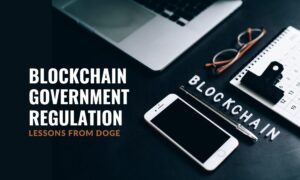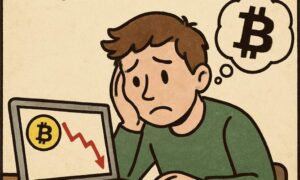Welcome to the future of education! In a world where borders are becoming increasingly blurred and information is at our fingertips, it’s time to embrace an innovative tool that has the power to revolutionize learning on a global scale—the metaverse. Imagine stepping into a virtual universe where students from all corners of the globe can interact, collaborate, and explore together as they build bridges to knowledge. From exploring ancient civilizations firsthand to conducting scientific experiments in zero gravity, this blog post will delve into how the metaverse is reshaping education and opening up endless possibilities for learners worldwide.
Introduction
The term “metaverse” has been gaining a lot of attention recently, especially in the world of technology and education. It refers to a virtual shared space created by the convergence of virtual reality (VR), augmented reality (AR), and other immersive technologies. In simple terms, it is a digital universe where users can interact with each other and their surroundings in real-time.
The concept of the metaverse was first introduced by science fiction writer Neal Stephenson in his 1992 novel “Snow Crash,” but it has since become a reality thanks to technological advancements. The rise of the metaverse has opened up endless possibilities for various industries, including education.
What is the Metaverse?
The metaverse is a term that has been gaining a lot of attention in recent years, especially in the world of technology and virtual reality. But what exactly is the metaverse? Is it just another buzzword, or does it hold significant potential for global education?
In simple terms, the metaverse can be described as an immersive and interactive digital world where individuals can interact with each other and their surroundings through virtual reality. It goes beyond traditional 2D screens and creates a fully immersive experience for its users.
But at its core, the metaverse is much more than just a virtual reality platform. It is an interconnected network of virtual worlds, spaces, and experiences that are constantly evolving and expanding. Just like the physical world we live in, the metaverse also has its own economy, social structures, communities, and opportunities for learning.
Benefits of Using the Metaverse for Education
The concept of the metaverse, a virtual shared space where users can interact with each other and digital objects, has been gaining significant attention in recent years. While often associated with gaming and entertainment, the potential applications of the metaverse extend far beyond these industries. One area that is especially promising is education.
In this section, we will explore the various benefits of using the metaverse as a tool for global education. From enhanced learning experiences to increased accessibility, there are numerous advantages to incorporating this technology into traditional educational practices.
1. Enhanced Learning Experiences:
One of the most significant benefits of using the metaverse for education is its ability to provide immersive and interactive learning experiences. Traditional classroom settings often rely on textbooks and lectures, which can be static and one-dimensional. With the use of virtual reality (VR) technology in the metaverse, students can engage with educational content in a more dynamic way. They can explore historical sites, travel through time, or even visit distant planets—all from their own classroom.
This level of engagement promotes active learning and helps students retain information better than passive listening or reading alone. In addition, the metaverse allows for hands-on learning opportunities that would otherwise be difficult or impossible to recreate in real life. For example, students can conduct science experiments without any risk or cost associated with traditional lab equipment.
Case Studies: Examples of how the metaverse is being used in education
In this section, we will explore some real-life examples of how the metaverse is being used in education across different levels, from K–12 classrooms to university settings. Through these case studies, we hope to showcase the diverse ways in which the metaverse can be leveraged as a powerful tool for global education.
1. Virtual Field Trips
One of the most exciting applications of the metaverse in education is its ability to facilitate virtual field trips. Traditional field trips have always been an integral part of hands-on learning, but they often come with logistical challenges and cost constraints. With the help of the metaverse, students can now embark on virtual journeys to any location around the world without leaving their classrooms.
For instance, Singapore’s Ngee Ann Polytechnic has developed a virtual simulation program called “Virtual Immersive Learning Landscape” (VILL), which takes students on a guided tour through historical sites such as Ancient Greece or Egypt. Students can interact with 3D models and artifacts while learning about their cultural significance, all from within their classroom.
2. Gamified Learning
Gamification is a popular educational strategy that uses game elements to engage students in learning. The metaverse offers an ideal platform for creating gamified learning experiences, as it allows educators to design immersive and interactive games that align with their curriculum.
For example, the University of Central Florida has developed a virtual chemistry lab in the metaverse, where students can conduct experiments and solve puzzles in a gamified environment. This not only makes learning more engaging but also provides a safe space for students to make mistakes and learn from them.
3. Collaborative Projects
The metaverse facilitates collaboration in education by breaking down geographical barriers and allowing students from different parts of the world to work together on projects. This promotes cultural exchange, global awareness, and cross-cultural understanding among students.
Challenges and limitations
The metaverse, with its endless possibilities and immersive experiences, has been gaining popularity as a tool for education. From virtual field trips to interactive lessons, educators are finding innovative ways to incorporate the metaverse into their curriculum. However, like any new technology, there are also challenges and limitations that come with using the metaverse in education.
One of the main challenges is accessibility. The metaverse requires certain hardware and software specifications to run smoothly, which not all students or schools may have access to. This could create a digital divide between those who have access to technology and those who do not, hindering equal opportunities for learning.
Another challenge is ensuring privacy and safety in the virtual world. As students interact with others from around the globe in the metaverse, it becomes crucial for educators to educate them on responsible online behavior and monitor their interactions closely. Additionally, there may be concerns about data privacy and security when using third-party platforms or applications within the metaverse.
Conclusion
The metaverse has the potential to transform global education and equip students with the skills and knowledge needed to thrive in a rapidly changing world. By embracing this technology, we can build bridges to knowledge and foster a more connected, understanding, and inclusive global community. The possibilities are endless, and it is up to us to harness their power for the betterment of education worldwide. So let us take this journey into the metaverse together and unlock its full potential for the benefit of our future generations.



































